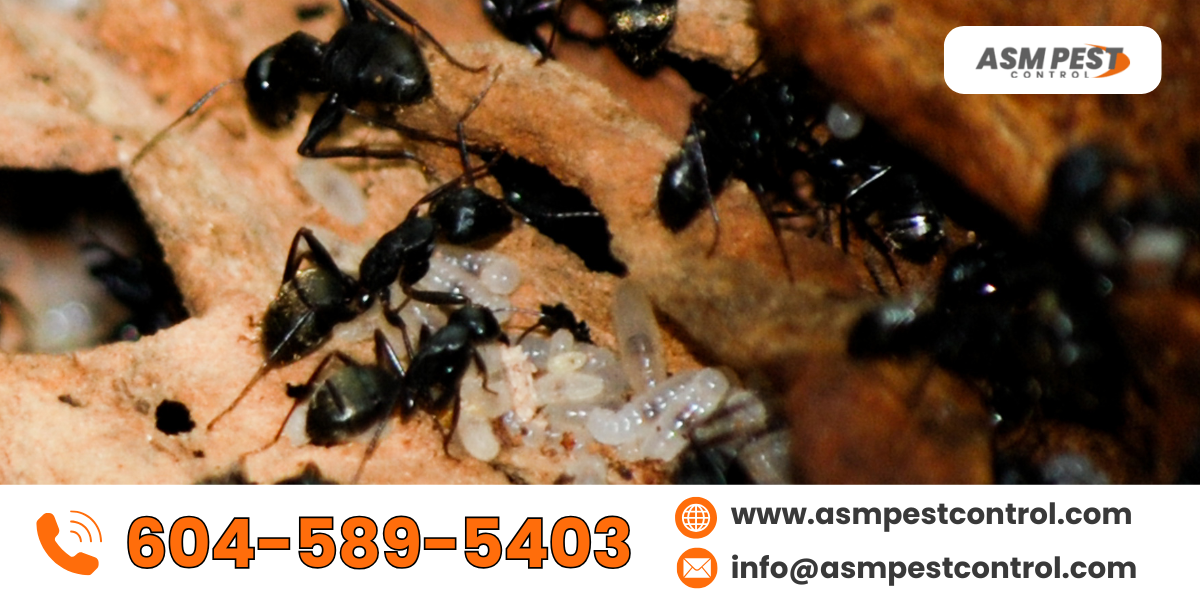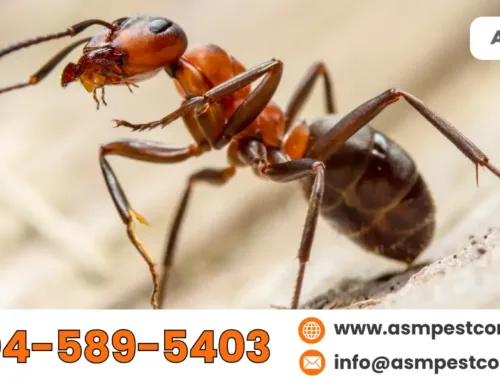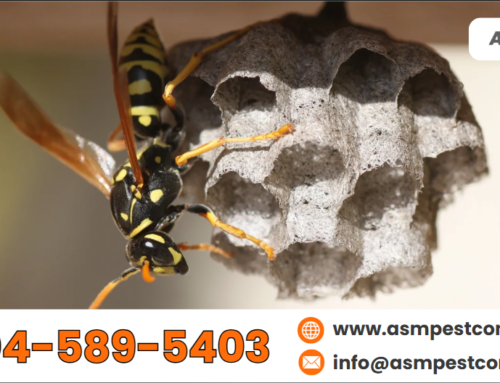The sight of large, dark ants inside your home can be unsettling, especially when those ants have wings. Different species can attack your home or office property, in which carpenter ants are very common. Even though they are tiny, they still create havoc if ignored. One of the nation’s most significant wood-damaging insect pests, carpenter ants, can cause significant structural damage to your home. Through this guide, we will delve into more details on signs of a carpenter ant infestation and how to stop their outbreak.
Signs of a Carpenter Ant Infestation to Notice
Little surface cracks in wood are the major indicators of a carpenter’s invasion of the house. Through these openings, the ants spew trash—sawdust-like shavings and/or bits of insulation and/or insect body parts. An active infestation is easy to identify by the accumulation of this trash below the holes. Carpenter ants construct smooth, sand-papered seeming gallery walls. Active galleries are free from trash. If you see these indicators, get in touch with an ant control Surrey specialist to learn about the quick elimination measures. If not properly taken care of, they can seriously ruin your house.
Identifying Carpenter Ants: Physical Characteristics
Although their species determines their colour and size, Carpenter ants are usually dark and significantly bigger than other common house ants. Usually black or dark brown, winged “reproductive”, they are around 3/8-inch in length. Commonly seen wingless, worker ants are winged reproductives found in spring mating swarms. If a few winged ants are found indoors, they probably nest outside. However, indoor swarms signal long-standing infestations numbering in the thousands, usually with structural damage to match. Carpenter ants have twisted or jointed ones.
Facts On Lifecycle and Establishing Their Colonies
Lifecycle
Well, their life cycle generally starts with the nuptial flights. This will depend on the climatic conditions, i.e. late spring or early summer. You can also name them as swarmers. They mate with winged females during their mating journey. The males die, and the females shed their wings soon after mating.
Forming Colonies/Nests
Female ants look for a fresh location to start their nests. Usually, the queen searches a wooden construction for a little fracture. She isolates herself inside that chamber and lays the first set of eggs. She stays in the chamber until her first batch of eggs develops into adult workers. The queen consumes her stored fat supplies and wing muscles during this period. Through her salivary glands, the queen feeds the young until they develop into workers capable of foraging. A colony can develop in a maximum of three to six years. A carpenter ant’s life cycle runs from egg to adult, estimated to be six to twelve weeks. Thus, the development period can be stretched by cold conditions for up to ten months.
Understanding Structural Damages and Health Risks
Before you think of performing ant control treatments, it is important to understand the health risks or structural damages it can cause. For major structural damage, Carpenter ants can take many years. They do not eat wood, but they feed on insects and honeydew in natural outdoor settings. Plus, they also feed on sweet material expelled by scale insects and aphids damaging plants. Carpenter ants hunt for meats, proteins, and sweets inside homes. These insects damage wooden buildings in different ways, even though they do not eat wood.
These ants, both indoors and outside, search for moist, rotting wood for nests. They dig out big, elongated tunnels called galleries once they have selected the nesting locations. Typical targets include wooden floors and joists beneath leaky pipes or water-damaged bathroom walls. Carpenter ant galleries are free of dirt and smooth. Nearby piles of dug sawdust point to the coming risk or damage to your structural property.
Smart Tips To Control Infestation of Carpenter Ants
Now let’s highlight a few important preventive measures for quick ant control Vancouver and learn about preventing future outbreak:
Sealing All Entry Points Around Your House
Look over the outside of your house for cracks and gaps, particularly around windows, doors, and vents. By closing these routes of access, carpenter ants are kept outside where they belong and cannot find their way inside your house and start colonies.
Cut Off Moisture Sources in Your House
These tiny pests are attracted to damp surroundings or leaks in roofs and pipes. Make sure gutters are clean and in good operating order. To stop ants from nesting within your house, dry off places such as bathrooms, crawl spaces, and basements.
Eliminate Foods Drawing Carpenter Ants
Store food in sealed containers, keep your kitchen neat, and clean food waste, spills, and crumbs. These ants are drawn to sweet materials. Hence, cutting food sources reduces the appeal of your house to these pests.
Cut Vegetation and Tree Branches Close to Your House
These ants sometimes find their way into your house via tree limbs or vegetation touching it. Cut back vines, shrubs, or branches that can provide ants with a bridge to reach the outside of your house, thus limiting possible entrance locations.
Examine and Repair Wooden Furniture
Search wooden buildings for evidence of carpenter ant damage, including beams, decks, and furniture. If you discover any, treat the wood with insecticide or see an ant removal Langley professional to eradicate the colony without endangering your property more widely.
FAQs
- Why are they known as “carpenter” ants?
They have been named after carpenters due to their ability to carve wood furniture for creating nests. But they don’t consume the wood.
- Can these ants damage trees?
Yes, they can infest trees with damaged or decaying wood. This can weaken the tree branches, making them more appealing to other dangerous pests.
- Do they travel in large groups?
These ants are social insects that travel in large groups. They form foraging trails to search for food and get back to their nests. This trail can spread across different locations.
- Can they infest furniture?
They can easily infest wooden furniture if it is in a rooting or damp state. But their first preference is always decaying outdoor or structural wood.
- Do carpenter ants fly?
Only the reproductive carpenter ants (alates) can fly as they have wings. These winged ants can swarm during the mating season, which is during late spring or early summer.
Hard to Get Rid of Carpenter Ants? Call Us Now!
Worried about carpenter ants damaging your house furniture? Don’t worry; ASM Pest Control brings you effective, fast and reliable solutions to tackle these tiny insects in just one go. As soon as you notice even a small ant infestation, you just need to give us a ring without any delay. A home is the largest investment for any person, and definitely, you definitely don’t want it to be ruined just by a few uninviting invaders. Get help from us right now and let your property be pest-free in future.






